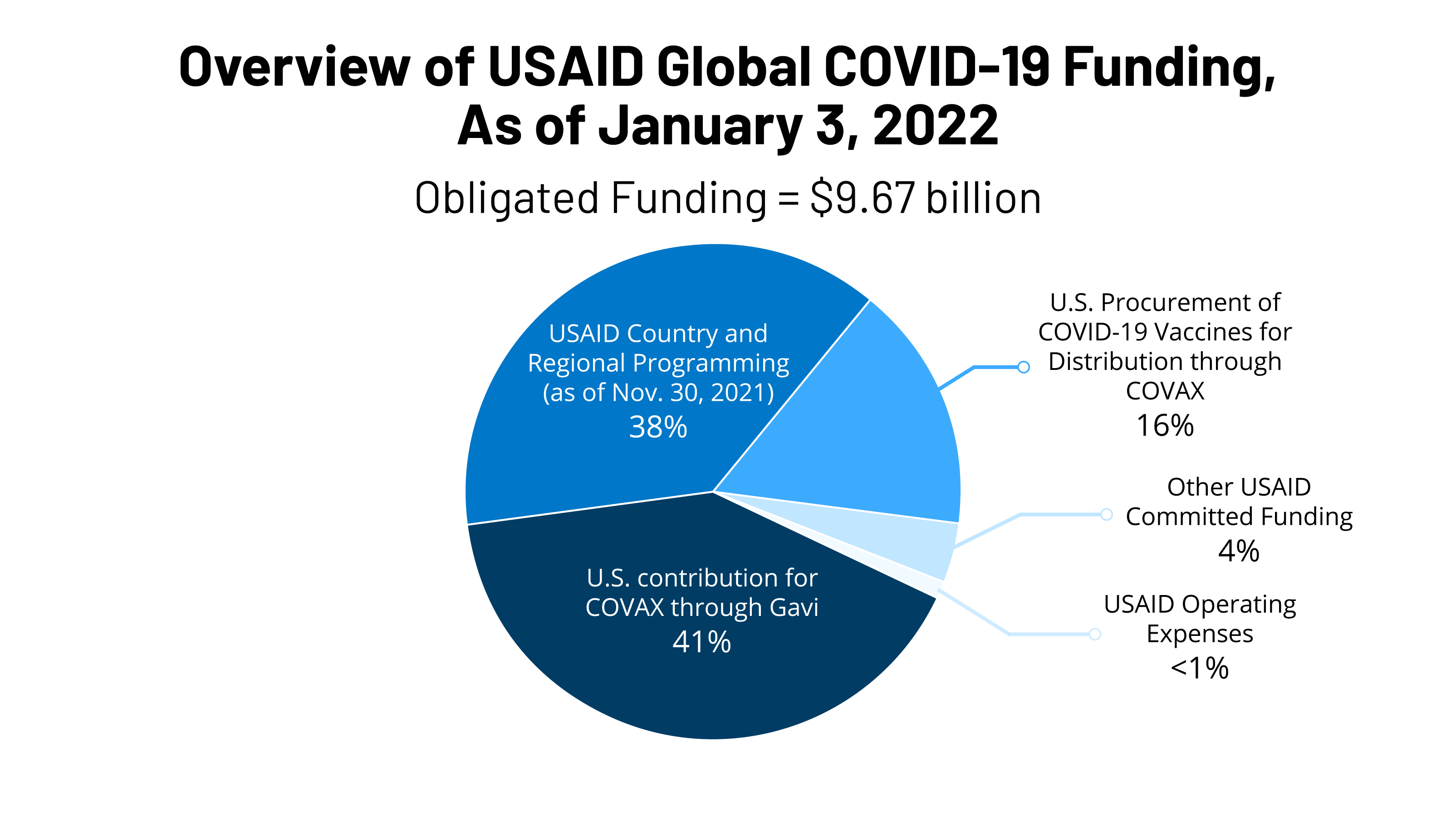As Congress begins to debate increased assistance for the global response to COVID-19, we look at how current funding is being channeled, particularly to countries and regions. Congress has enacted six emergency supplemental funding bills to address the COVID-19 pandemic as of February 16, 2022, which collectively provide approximately $19.03 billion for the global response, including for health and humanitarian efforts. Of this amount, $11.1 billion (58%) was either directly appropriated to or is managed by the U.S. Agency for International Development (USAID). The remainder was appropriated to the State Department and the Centers for Disease Control and Prevention (CDC). To better understand how this funding has been used, we analyzed newly available data from USAID (current data disaggregated by country and region were not available for other agencies). This included overall USAID funding obligated as of January 3, 2022, as well as country and regional funding amounts obligated as of November 30, 2021. Data were aggregated from several documents to provide a more complete analysis of what is known.
Findings
- USAID reports that, as of January 3, 2022, of the $11.1 billion appropriated to or managed by the agency, it had obligated approximately $9.67 billion in COVID-19 emergency funding for programming and related efforts to respond to COVID-19 globally, with an additional $797 million approved or notified to Congress. Together, this represents virtually all emergency funding appropriated to or managed by USAID to date.
- Included in the $9.67 billion in funding obligated by USAID are the following:
- $3.68 billion (38%) for country and regional COVID-19 programming (as of November 30, 2021) to support a range of activities, including: delivery and distribution of vaccines; strengthening health care systems by expanding surveillance, supporting health workers and facilities, and providing essential health supplies; providing emergency food assistance; and improvement of sanitation and hygiene services.
- $4.0 billion (41%) to support Gavi’s COVID-19 vaccine procurement and delivery activities through COVAX,
- $1.5 billion (16%) for COVID-19 vaccine procurement for distribution through COVAX, and
- $80 million (<1%) for operating expenses. See Figure 1.
- Funding was obligated to 124 countries (additional countries may be reached through regional programming) See Table 1.
- The top ten countries, by funding amount, each received at least $89 million and together accounted for nearly half of funding (46% or $1.7 billion) obligated by USAID. Three countries received more than $200 million each: Ethiopia, Syria, and India. See Figure 2.
- By region, the largest share of country and regional funding was directed to sub-Saharan Africa (43%), followed by Asia (22%), the Middle East and North Africa (17%), Latin America and the Caribbean (14%), and Europe and Eurasia (4%). See Figure 3.
- By bureau, the largest share of country and regional funding was directed through the Bureau for Humanitarian Assistance (59%), followed by the Bureau for Global Health (25%), regional bureaus (16%), and the Bureau for Development, Democracy, and Innovation (<1%), though this distribution varied widely by region. For example:
- in sub-Saharan Africa, the Bureau for Humanitarian Assistance received most funding (72%), followed by the regional bureau and the Bureau for Global Health (14% each);
- in Asia, the Bureau for Global Health received most funding (62%), followed by the Bureau for Humanitarian Assistance (20%) and the regional bureau (18%); and
- in Europe and Eurasia, the regional bureau received the largest share of funding (41%), followed by the Bureau for Global Health (39%). See Figure 4.


Your article helped me a lot, is there any more related content? Thanks!